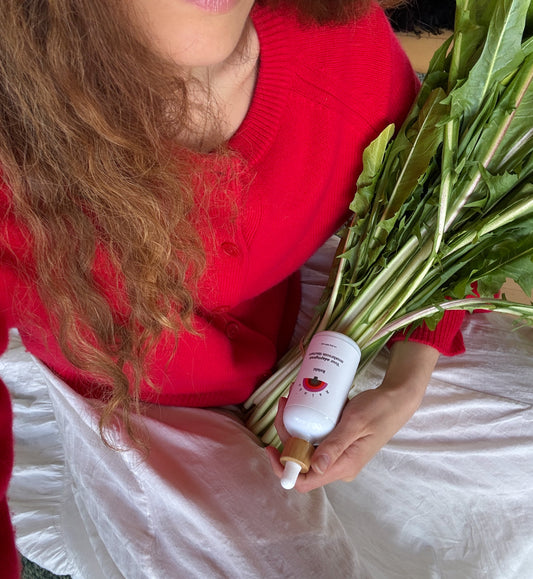Mycobiome
What is the mycobiome?
The mycobiome is a term coined in 2010 combining two words: mycology and microbiome. The former refers to the study of fungi and the latter refers to the microorganisms that live together in an environment. Together, it describes the fungi that cohabitate an environment such as the gut and skin of the human body.
While the bacteriome, the bacterial component of the microbiome, has been studied extensively, mycobiome research is still in its infancy, and a lot is still unknown and under-explored. There are many reasons for this lack of research. One reason being that fungal presence is significantly less than the bacterial communities in the gut, consisting of about 0.1% of total microbes in the gut. Similarly, the diversity of the gut mycobiome is relatively low compared to bacterial communities, with core gut microbiota consisting of only three genera (a taxonomic rank to categorize living beings).
Another reason is that research is limited by identification methods: there are no standardized approaches to identify fungi, and analysis strategies are rapidly evolving. For example, most researchers use culture-dependent methods of identifying fungal communities, meaning that studies were often restricted to a few species. Furthermore, fungal analysis through sequencing their genomic data is limited to what has been already studied and the available data, potentially under-representing the mycobiome.
However, this lack of research and the lack of representation of fungi in the microbiome does not mean that the mycobiome is insignificant. In fact, studies have shown that the mycobiome, especially the one in our gut, plays a key role in our health.
How do health and the mycobiome relate?
When the mycobiome is in balance, also known as homeostasis, it supports a healthy immune and digestive system. On the other hand, when the mycobiome is out of balance, it can lead to infections and disease. Just like how there are both “good” and “bad” bacteria, fungi operate in the same way. Fungi can be pathogenic (disease-causing), but only about 0.0058% of fungi are pathogenic in humans. Even fungi that are pathogenic are not always harmful. Rather, when they are not overgrown and are kept in check, these fungi can be beneficial to us.
The balance of beneficial and harmful fungi is what determines health vs. disease.
For example, Candida, a group of infectious fungi, has a negative reputation, and people often think they need to eliminate it completely from the body. However, Candida, which is present in about 50-60% of people, can actually benefit our health when it is not overgrown (representing only 1-2% of total fungi). Candida aids in breaking down food, allowing bacteria to take these byproducts and produce even smaller molecules that help our immunity and digestion. More specifically, Candida albicans can induce “trained immunity” and functionally reprogram monocytes (a type of white blood cell that helps fight infections and removes dead, damaged, or foreign cells) to fight against reinfection.
Unfortunately in our North American society, Candida is often problematic for many people (ie. not in balance) due to lifestyle factors like high stress, overworking, insufficient sleep and rest, overuse of antibiotics and many dietary factors like high acid-forming foods, meat, sugar, caffeine, alcohol, etc. but more on this soon!
Similarly, another fungus Saccharomyces cerevisiae, a yeast used in making beer and breads, contains chitin, a carbohydrate, in their cell walls. This carbohydrate is also able to “train” immune cells, helping maintain gut immune homeostasis and protect the host against pathogens (disease-causing substances).
Together, Candida and Saccharomyces work to maintain our health. A study by Sokol et al. found that Saccharomyces is more present in people who are healthy, while people with Crohn's Disease have more Candida in their gut. This further emphasizes the importance of balance of microorganisms in our bodies for our wellbeing.
Another example of a beneficial fungus is S. boulardii, a yeast that releases enzymes that deactivates toxins produced by harmful bacteria such as C. difficile and E. coli. Beneficial relationships between fungi, bacteria, and the host, such as the aforementioned relationship, is a constant theme in the gut. For example, “good” bacteria such as Lactobacillus keep Candida in control. Therefore, if one takes antibiotics, it can kill the good bacteria that regulate Candida, resulting in a Candida spike. This imbalance can lead to bloating, gas, changes to bowel movements and other GI issues along with infections such as UTI’s, yeast infections, thrush and a host of other symptoms like skin conditions, mood swings, intolerance to sugar, cravings and more.
How do we encourage a balance in the gut for optimal health?
While the gut mycobiome is influenced by a number of factors such as age, diet, medication, host immunity, host genetics, and the host’s bacteriome, it still remains largely unknown to what extent each factor affects the mycobiome throughout various stages of life. However, what is seen time and time again through various studies, is that diet can greatly affect the mycobiome—both negatively and positively.
Diet can change our mycobiome as it affects the biofilm—the habitat in which fungi and bacteria are interacting with each other—such as in your gut and on your skin and oral cavity. While we can get rid of the biofilm (dental plaque) that forms in our oral cavity by brushing our teeth, we cannot do the same for our gut. Surprisingly, antibiotics, anti-fungals, and our immune system cannot get rid of the biofilm, so diet and supplementation is the only way to change the biofilm there by starving the “bad” microorganisms and feeding the “good” microorganisms.
More specifically, decreasing sugar can help as Candida loves and feeds on sugar. Furthermore, high fat, red meat, and processed meats also encourage the growth of “bad” microorganisms. On the other hand, to feed the “good” microorganisms, our diets should consist of the right types of carbs and sugar, such as fiber and resistant starch. We love the Periodic Table of Microbiome-Friendly Foods below. Microbiome research indicates that an important piece of gut health is the amount and variety of vegetables, fruits, nuts, whole grains, and beans that you eat. This chart offers a wealth of choices for fiber-rich and gut-friendly foods to support both bacterial and fungal populations.
Foods that favour the healthy microorganisms in the gut include:
- All leafy greens
- Low-glycemic vegetables
- Sweet potatoes
- Nuts
- Seeds
- Garlic
- Onions
- Seaweeds
- Mushrooms
- Brown Rice
- A wide range in fruits and vegetables - diversity is extremely important
- Avoiding foods that one is allergic or intolerant to

Can our diets really change our mycobiome?
While adjusting the gut bacteriome takes time, our gut mycobiome can be adjusted in about 24 hours by optimizing diet. Similarly, while our bacteriome is fairly stable over time, our gut mycobiome has been shown to be very individualized to us and our lifestyles, being highly variable between individuals and within individuals over time.
This change was demonstrated in a study where healthy adults followed a particular mycobiome diet. The designers of the study recognized that the typical Western diet is full of fats, simple and refined sugars, salt, animal protein, with a low percentage of fiber, leading to an imbalance in the gut microbiome and increasing the likelihood of obesity and other diseases such as diabetes, arthritis, inflammatory bowel disease (IBD), heart disease, and even cancer.
The scientists decided to cherry-pick from various diets such as Paleo, Keto, Vegetarian and Mediterranean, to incorporate the best parts from each protocol, while avoiding aspects that have proven in the past to increase pathogenic fungi in the human gut. For example, the participants limited their sugar, meat, alcohol, and heavy carbohydrate intake, while whole foods, vegetables, legumes, and seafood were encouraged.

Within two weeks of following the mycobiome diet, subjects had a decrease of 72.4% of the genus Candida, a group of yeasts associated with multiple diseases such as IBD and Crohn’s disease, in the gut. And by week four, beneficial fungal species Galactomyces geotrichum and Pichia kluyveri increased by 58.4% and 45.1%, respectively. Furthermore, they discovered that Pichia releases an inhibitory molecule that limits the growth of Candida and other fungal pathogens, helping keep the gut mycobiome in balance.
In addition to rebalancing the fungal gut community, the mycobiome diet rebalanced the bacterial gut community, decreasing harmful bacteria (Proteobacteria, Escherichia coli, Bacteroides fragilis, and Clostridium) while increasing beneficial bacteria (Faecalibacterium prausnitzii, Roseburia, Lactobacillus, Bacteroides, and Bifidobacteria).
The mycobiome diet suggested in this study is also a microbiome supportive diet as well - so both microorganism groups will be supported by consuming this diet.
Bottom Line?
Our gut is abundant with organisms that are pivotal for our well-being. Some of those organisms are fungi! Like everything in life, gut fungi need to live in a harmonious balance for optimal health. The most efficient way of supporting that balance is by managing our diets such that we are feeding the beneficial fungi while limiting the foods that allow the harmful fungi to thrive.








